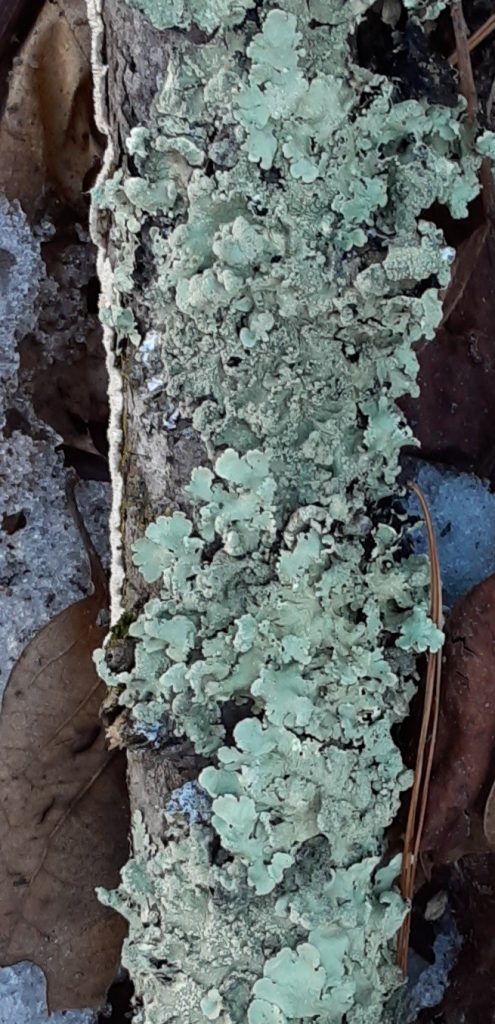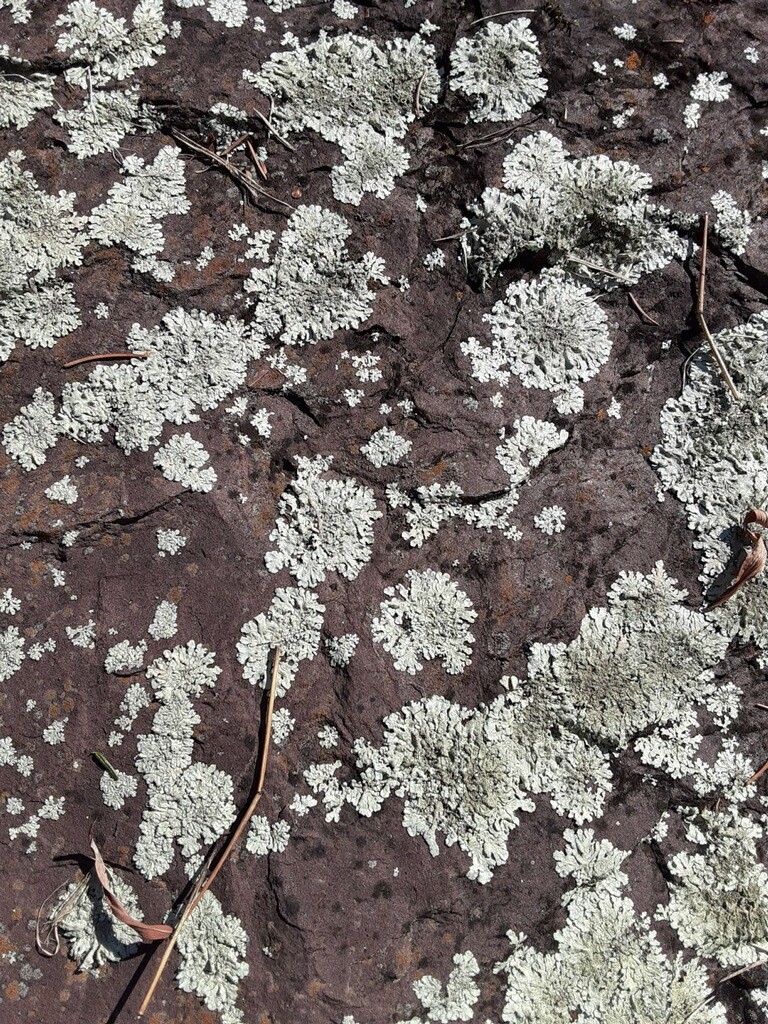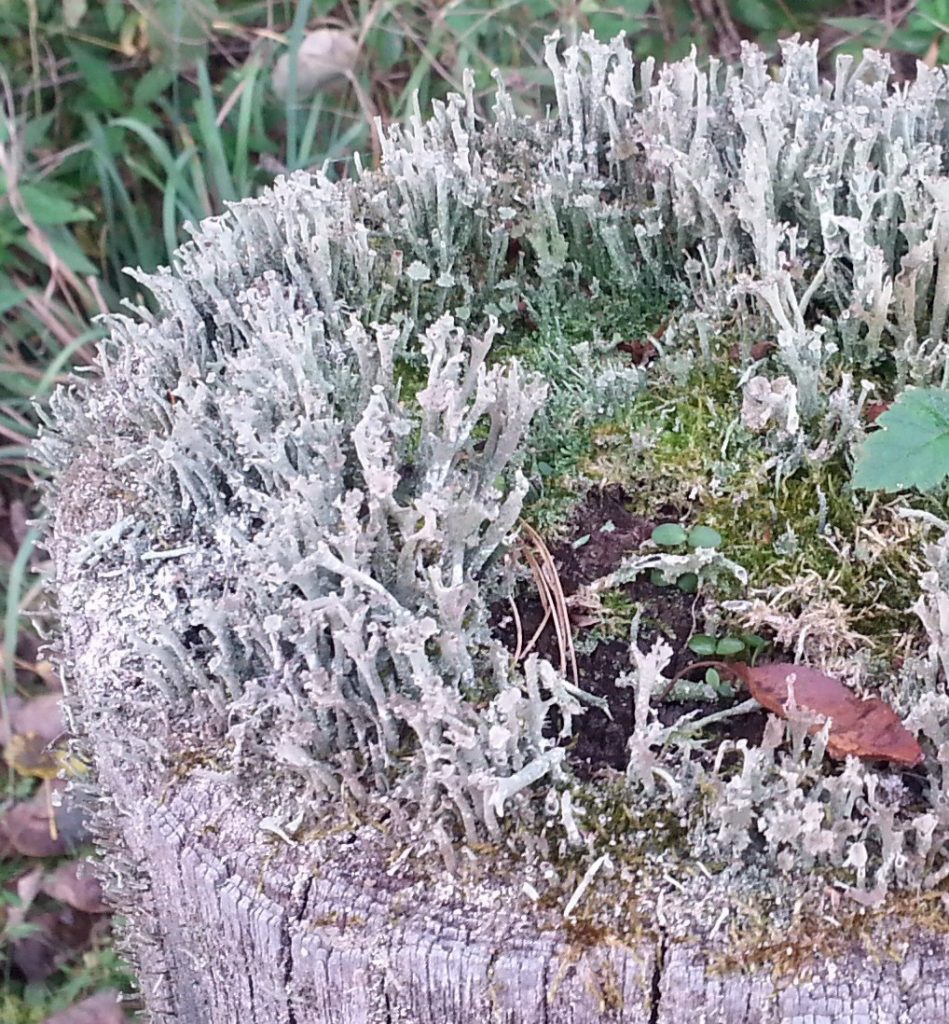By Susan Sprout
I like lichens, always have, always will… for lots of amazing reasons that I’d be happy to share with you! First of all, I really enjoy looking at them and studying their diverse shapes and sizes and colors and growth habits and where they grow and uses and, well, everything! Aren’t they lovely to look at, as they decorate tree trunks, upright or fallen? They brighten the dark winter bark, especially after a good wetting – fog, rain, snow – because moisture causes the topmost layer of “skin” to become more transparent, allowing the green algae layer to show through. They aren’t as crispy and brown then. Think of all the vertical paint they provide on rock faces that you’ve seen along the road. Lichens have special pigments caused by acids (four hundred are known) that provide a variety of colors – reds, oranges, yellows, browns, and of course, the green from algae.

Lichens have many different shapes and lifestyles. They are usually described by lichenologists (people who study lichens) as Foliose (flat, leaf-like lobes); Crustose (tightly adhering and crusty); Fruticose (branching with shrub-like tufts); Leprose (powdery); Gelatinous (jelly-like); Filamentous (stringy, matted hair); Byssoid (wispy, teased wool); Structureless. This doesn’t surprise you because you’ve seen them all, right? They are everywhere – from cold Arctic to hot, dry desert – growing on bark, wood, rock, soil, peat, glass, metal, plastic, cloth. They can even be found inside rocks, growing between the grains or mineral crystals. It has been estimated they cover six to eight percent of the earth’s surface, all the while pumping out oxygen for us air-breathers!

And that’s a segue to another reason lichens are so wonderfully interesting. They have a mutualistic relationship with algae which grows inside the main body or thallus of the fungus. Both parties benefit, a win-win situation. The fungi benefit from the carbohydrates produced by the algae (and sometimes cyanobacteria) as they photosynthesize to make food for growth AND the algae benefit by being surrounded with fungal filaments that protect and retain moisture for them in harsh environments. If cyanobacteria is present, it can fix atmospheric nitrogen to complement the food making process. A well-known lichenologist Trevor Goward has written, “Lichens are fungus that have discovered agriculture.”
There maybe upwards from 13,000 to 20,000 different species of lichens in the world, with North America boasting 3,600. Some of them may even have more than one species of fungus and algae on board. They can morph in shape and lifestyles (chimeras). Their long life span and slow, regular growth rate can be used to date events (lichenometry). There are lichens in England with a diameter of 18 to 19 inches that began life in 1195 A.D. and specimens in Sweden that are 187 inches across that may have been alive for 9,000 years.

Lichens can be used for food, clothing, insulation, colorfast dyes, soft drink colors, extracts in toothpaste, deodorants, salves, fixatives for perfumes, potpourri, and medicines. Modern medical research is verifying many of the old lichen remedies. Supposedly fifty percent of lichens have antibacterial properties. One drawback of ingesting lichens is their higher absorption rate and accumulation of Strontium 90 and Cesium 137 from radioactive fallout, which is anywhere from ten to one hundred times more than most other plants in temperate and northern regions.


